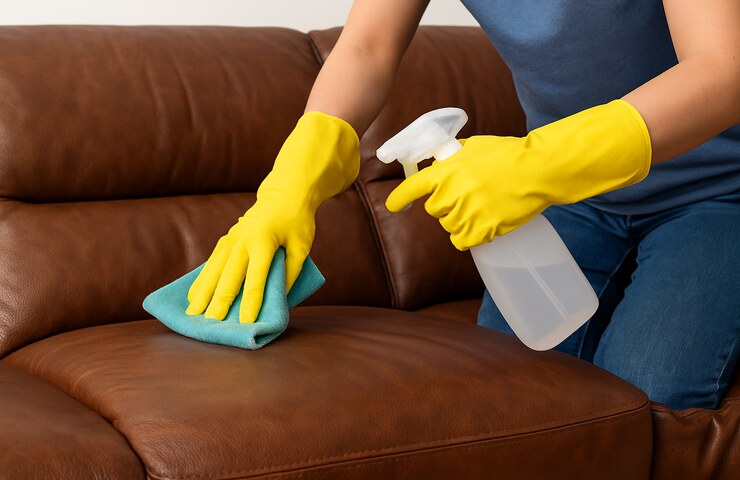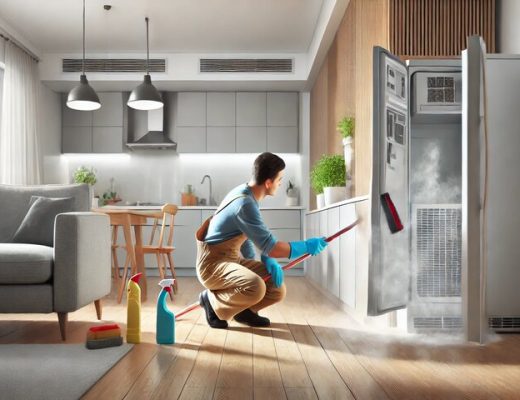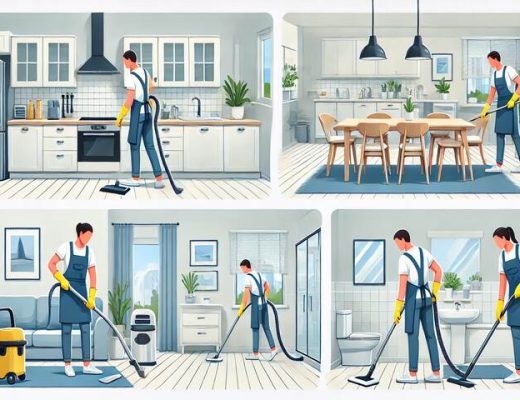Best Way to Clean and Disinfect Leather Couches
An expensive leather couch can make a room look good; however, keeping it looking that way will be time and work-intensive. Leather comprises a natural raw material that absorbs oil from the body and dirt, plus any other spills over a given period. Over time, it will be discoloured and may even crack. This is how leather upholstery will be different from fabric upholstery. Some right methods and products should have been carefully designed for use on leather to ensure long-lasting behaviour and looks in leather.
You clean and disinfect your leather couch for aesthetic reasons, but also rid your house of bacteria, allergens, and bad, toxic atmospheres. This is probably how to clean and condition leather for everyday dust, even for the toughest stains on this heavenly piece of furniture. This article will talk about the best cleaning and disinfection methods that don’t harm your leather couch as it tries to keep it soft and pristine.
For more on proper leather care, the Western Australian Museum’s Leather Care Guide provides helpful insights.
Step 1: Remove Dust and Debris
The first step to dusting a couch of dirt and germs is to clear it of all the dust and debris. This will facilitate an easy and effective cleaning procedure. Dusting: A vacuum cleaner should be used to remove all the big debris from the surface. Concentrate on the folds and creases of the couch. If you cannot buy one, you might rent it from a nearby hardware store on the Sunshine Coast. Attach the vacuum brush: After all that easy-to-see debris has been vacuumed, focus now on all the more difficult debris. Remember: even small debris can create a scratch mark on the couch finish. So use the brush attachment of the vacuum cleaner and scrub away.
Use a microfiber duster: Once you have removed all debris, use a microfiber duster to free the surface of any dust. This is the same method that professionals use while conducting end-of-lease cleaning in the Sunshine Coast.
Step 2: Cleaning and Disinfecting Procedure
You must clean and disinfect your leather couch in this step after removing dust and debris. For that, many commercial and homemade products can be used. Always remember that regular maintenance and using the correct cleaning method can prolong the life of your couch. Prepare the solution: If you are uncertain about any commercial cleaning product for your leather couch, you can make the solution at home. Take a bowl and mix equal quantities of vinegar and water. It is best to use distilled water because tap water may contain certain chemicals, such as chlorine compounds, that damage the leather surface over time. Clean the surface:
Dip a piece of cloth in the solution and wring it nicely, so the cloth is only wet. Water can potentially damage leather surfaces, so make sure you wring it well. Start wiping from the top, working downwards. Wipe in small sections for effectiveness. The above, considering the surface is more effective if you scrub it gently and again dip the cloth into the solution a couple of times for proper cleaning. Remove moisture: After cleaning, it becomes imperative to dry the surface. Therefore, wipe off a small section after cleaning it with a fresh towel, and then proceed to the next one to finally clean the whole couch.
Step 3: Cleaning Stains
A leather couch is in to complaints about stains formed by coffee, ink, or grease, and all these stains can be hard to eradicate. Leaving such stains uncleaned, on the other hand, may cause blemishes on the leather surface. Rather, employ professionals for Bond Cleaners Sunshine Coast. If you are going for DIY, follow the methods. For grease stains: Greasy stains on leather couches usually come from oily foods or beauty products. Sprinkle some baking soda or cornstarch over the spot and let it sit for a while.
Then remove the powder and clean that area. Using rubbing alcohol, moisten a small piece of cotton to remove the ink stain. Next, with even gentle pressure, blot the ink from the surface. For other tea and coffee, or wine stains: You must clean up the spill as soon as you spot it. Remember that the longer you leave it to be cleaned, the harder it is to remove.
Step 4: Preserving Your Leather Sofa
Once you clean your leather couch, conditioning comes next. This will maintain the quality of the leather and prolong the life of the couch. Prepare the solution: Pour two cups of white vinegar into a bowl, then add 10 to 12 drops of tea tree oil into it. Stir the solution so that the vinegar and oil get mixed well. If you want to use a commercial leather conditioner, read the directions well before using the product. It is, however, better not to use the olive oil because at some point, it may create damage to the leather. Apply the mixture: Take a clean rag and dip one corner of it into the mixture.
Wring it out properly, then rub it gently onto the leather surface with circular movement. Leave it overnight to dry after you are done. This will not only maintain the texture but will also disinfect it. Buff the leather couch: To restore its shine, buff the surface of the couch with a clean rag. Start from the top and work your way downwards. You must rub it in a small and circular motion.
Conclusion
Your expensive leather couch will beautify your living room. Therefore, it deserves care in cleaning and employing cheap and quality end of lease cleaning in the Sunshine Coast. If you know your way around cleaning and disinfecting, then you can DIY and use the instructions above. Caring for your leather sofa includes regular cleaning and disinfecting routines. Doing it with the right products and softer techniques would then allow you to protect the natural textures of the leather against damage. A small part of that effort brings about freshness, cleanliness, and comfort in the leather sofa.
Also learn about Nine Household Item Tips for Unclogging Blocked Drains



